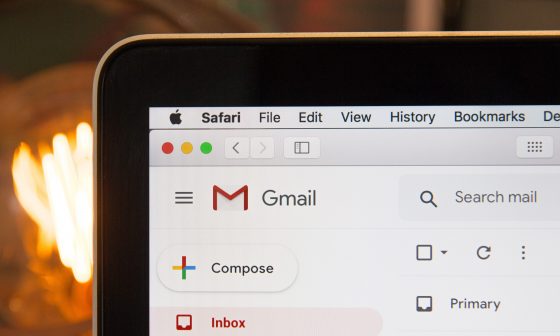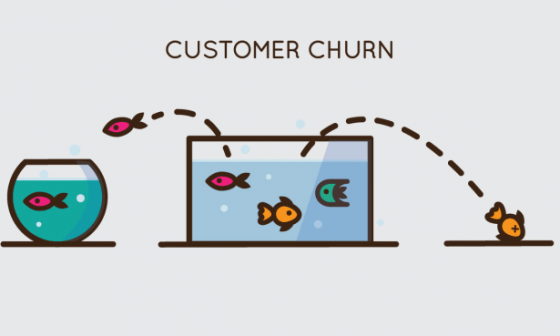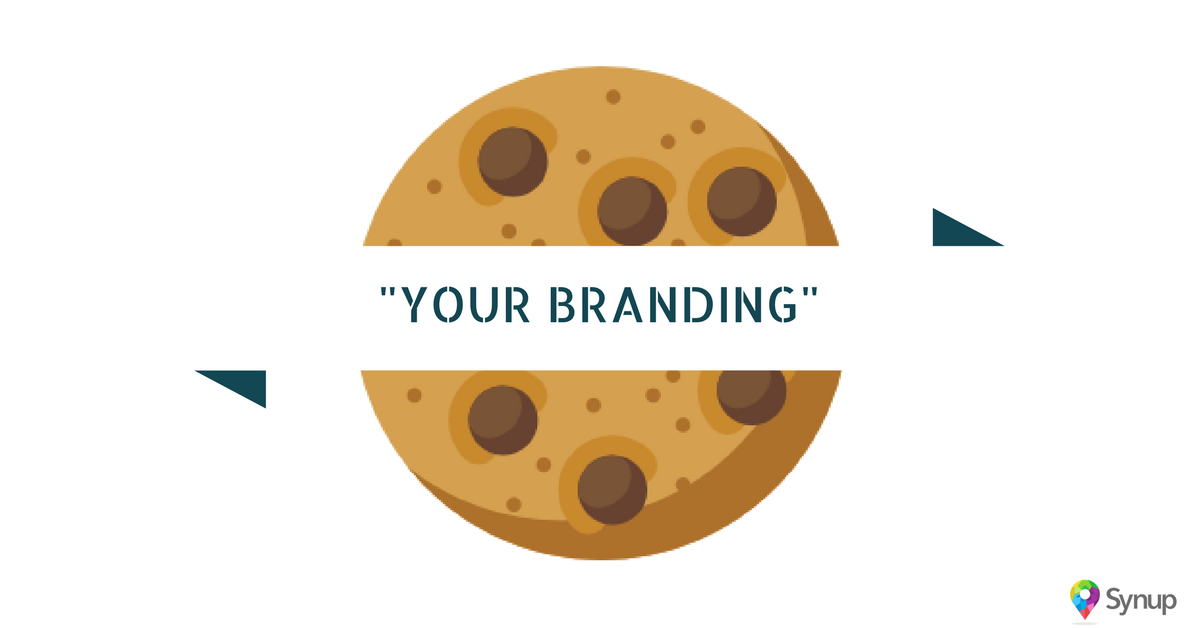5 Ways Agencies Can Use and Maximize Local SEO To Drive Client Success
Imagine a brick-and-mortar store in a bustling city attracting tremendous foot traffic because people can find it with a simple Google search.
A dream come true, right?
But this can also be a reality when you nail local SEO right in the head.
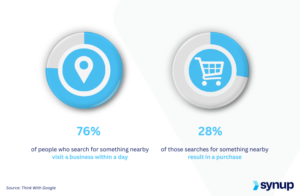
Local SEO can greatly improve a brand’s organic sales, customer interaction, and visibility. Studies suggest:
- 2022 had a 400% rise in the “Open now near me” search
- Almost 60% of people/target audience/customers search the business from the local search results
- 76% of people visit a business within a day after searching
SEO agencies can leverage local SEO’s power and help boost local business by following simple steps. And in this post, we’re going through the best tactics and five white-label tools to help you deliver great results to your clients.
Why Provide Local SEO Services?
Google processes 8.5 billion searches every day and ranks them using its algorithm. And location plays a big role in ranking businesses in search results.
Notice how you can search for local businesses or services when you search “[product/service] near me?”
The search engine tailors results based on location using the proximity factor in the local search algorithm. So, when I searched “fitness centers near me,” I got the results for gyms where I was (Napa, CA):
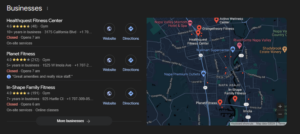
These results might be different when you carry out the same search. In fact, I did this search sitting in a cafe; it’ll even show different results when I’m in a different locality.
To be clear, local search isn’t new. However, because internet usage was tethered to desktop computers, it was difficult to fully maximize its potential. However, with mobile internet access, people are now able to search for local goods and services using their phones. When they do, Google tends to prioritize businesses with proximity to the user on search engine results. This makes it very important for businesses to invest in local SEO services. Additionally, with local SEO, businesses can get:
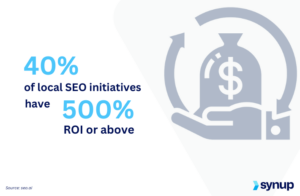
- Better visibility: Average businesses get 22.6% of their website traffic from local searches.
- Higher conversions: Businesses optimized for local searches get a close rate of almost 15%.
- More sales: Within 24 hours, about 28% of local searches lead to a purchase.
- Great ROI: 40% of local SEO initiatives have a 500% ROI or above
Marketing agencies providing local SEO services can incorporate some amazing practices in place and see their clients returning for more service later. To better optimize, refer to Moz’s annual report; Moz publishes an annual Local Search Ranking Factors survey of 35 to 40 global experts in local SEO. Give it a read to get valuable insights into the aspects that drive local search visibility.
5 Ways Agencies Can Use and Maximize Local SEO to Drive Client Success
In the simplest terms, local SEO takes your standard SEO strategies and applies it on a more localized scale with the intent of being more visible to a relevant audience. Here are a few ways you can implement local SEO strategies to make sure you get your desired results.
-
Google Business Profile (GBP) Optimization
Google Business Profile (GBP) is a free service provided by Google that lists businesses for local searches. Listing your client’s business on Google is important for increasing their online presence and attracting more local customers through Google searches.
Understand that the Google Business Profile is the first thing a potential customer sees when they do a Google search for a specific business. For example, if someone searches for a digital marketing agency in the Hollywood area, Google is more likely to pull up my agency, Hennessey Digital, in the searches if I am able to properly optimize my GBP profile.
Here are a few things to consider during registration:
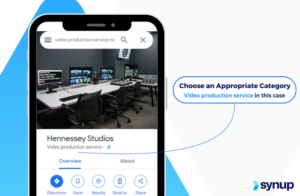
- Make sure you provide product/service descriptions, list accurate hours of operation, and give accurate addresses. Otherwise, your clients can miss out on customers who show up at the wrong times at the wrong address and even risk an unsatisfactory review.
- In the registration process, choose primary and secondary categories carefully and strategically. Businesses may choose up to ten categories; however, they will heavily influence their rank.
- As of March 2024, Google no longer offers creating business profiles with Google My Business. All previously created websites were initially redirected to the GBP profile but will now show a 404 error message. Therefore, if your client uses Google My Business website, you’ll have to update their profile with a new website.
Pro tip: Your Google Business Profile is also a good platform for engaging with your audience. You can put up commonly asked questions, answer them, and upvote them. Make sure they get the most upvotes to remain on top. Since Google has an auto-answer feature, it uses the most upvoted answer to automatically answer anyone who asks a question similar to the previously answered one. Since users get an immediate answer without waiting, the client wins a chance to convert a customer.
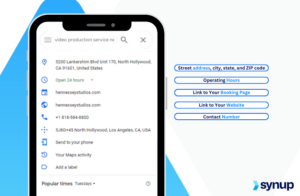
#2 Local Keywords Optimization
Local keywords are keywords that help local customers search for businesses and services. People in New York looking for Italian restaurants will search for “Italian Restaurants in New York.” That’s your keyword right there.
You may also add supportive keywords to widen the possibility of a business’s visibility and make it easy to list on Google.
Various free and paid tools, such as Keyword Planner and Semrush, can help you find trending local keywords to add to the business website.
Where can you use these local keywords or phrases once you find them?
- Use them in the main title of a web page, subheaders, meta descriptions, meta titles, and overall website content, and conduct the on-page optimization accurately.
- Use it in content, such as blogs or newsletters.
- Add it to the business’ upcoming events, offers, discounts, or any further announcements that people should know.
Don’t: Use “Italian Restaurant” as a keyword, as it is a general keyphrase that is not precise for localities when searching for specific restaurants in Brooklyn.
Do: Target “Italian Restaurant in Brooklyn” as a key phrase specifically used to search.
Here are ten local keyphrase structures to use:
- Affordable [service] in [city]: i.e. Affordable haircuts in Miami
- Reliable [profession] near [city]: i.e Reliable electrician near Denver
- Top [product] stores in [city]: i.e Top furniture stores in Seattle
- [city] known for [service/product]: i.e Portland known for coffee shops
- Discounted [service] in [city]: i.e Discounted dental care in Austin
- Popular [profession] in [city]: i.e Popular fitness trainer in Chicago
- [product] manufacturers in [city]: i.e Car parts manufacturers in Detroit
- [city] [service] guide: i.e Philadelphia pet grooming guide
- [product] deals in [city]: i.e Home appliance deals in San Francisco
- [service] availability in [city]: i.e HVAC services availability in Houston
In addition to using keywords and phrases, here are a few on-page local SEO tips:
- Create a separate page for multiple branches in different locations on your client’s website. Make sure customers can have easy access to each branch location.
- Embed the Google Maps with the business location on their website with the precise location.
- Use local business schema markup to help search engines understand your client’s business’s location and services.
#3 NAP Consistency
NAP stands for name, address, and phone number, and consistency in adding and updating the NAP details across all the online platforms and directories is a must for local SEO.
Here are a few tips for NAP consistency:
- Select the high-impact directories, such as Yelp, Bing Places, Google My Business, etc.
- Remove any duplicate listing across the internet
- Add NAP information in the footer of every page of the website
- Always use NAP in texts and not images
- Build the citations on local business directories like Yelp, Yello Pages, or other industry-specific sites.
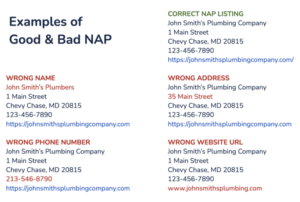
#4 Local Link Building
Link building is an important part of SEO strategies, and local link building focuses on getting links from local businesses or businesses targeting the audience in a given locality. It increases your client’s domain authority, boosting their chances to rank high on SERPs.
Here are a few ways to build local links:
- Participate in a sponsorship program by sponsoring local events or partnering with local businesses.
- Get listed on local directories.
- Engage with the local community by organizing events and getting local media coverage.
- Work with social organizations and charities to build backlinks on their websites.
- Feature your client’s businesses on third-party websites by contributing to their blogs or guest posting articles.
- Build a social media engagement page that will attract the attention of local people.
Pro tip: Get your clients to build their very own sponsorship page on their website and add relevant high-domain authority links. Here’s an example:
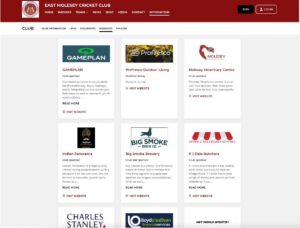
#5 Online Reviews Management
What do you do when you want to eat at a new place? Probably search for the cuisine, and Google will present a list of options, right?
How do you filter the options and make a choice?
The obvious answer is looking at ratings and reviews!
Online reviews are crucial to local SEO as they help build social proof and credibility on the internet and in the locality. Marketing agencies often overlook reputation management in their SEO services. However, including these services in your SEO plan is crucial since reviews are a highly weighted aspect of local algorithms. Reviews have become more important to the local algorithm over the last few years, and Google increasingly prioritizes them.
To effectively manage online reviews, you must be ready to accept a good review and constructive feedback. Here are a few tips:
- Always encourage new and returning customers to leave a positive review on Google and other directories.
- Respond to those who add a review for you. Thank the positive ones and offer help to the unsatisfied customers who may leave a negative remark.
Check how San Francisco Automotive Solutions responds to a customer who left a negative review for them:
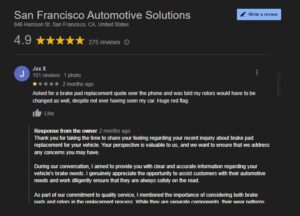
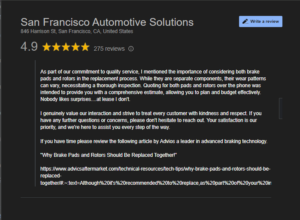
I love how the company owner took the time to walk the unsatisfied customer through the solution. It not only engaged an old customer but also demonstrated to new ones that the business cares about its customers.
They also take time to respond to customers who leave positive reviews in a polite and thankful tone.
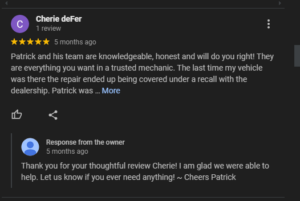
Pro tip: Reviews with photos, longer text, or multiple thumbs up stay longer in the default sort on business profiles. So, to manage negative reviews, engage more with satisfied customers and get them to add photos and detailed stories to their reviews. Have your team thumbs up those reviews and push positive reviews to the top, quickly burying any negative ones.
How to Find Businesses That Need Local SEO?
So, now you’ve got solid ways to implement Local SEO, but where do you find the businesses that need local SEO services? Here are ten actionable tips for identifying these businesses and targeting them:
- Engage with local business owners: Interact with the local vendors and educate them on why they need local SEO and how it will affect their business.
- Check local search results with Google search: Search local keywords, such as “bakery in [city name],” and see which businesses are not ranking well. Reach out to them, letting them know what you can do for them.
- Find them on Google Maps: Check local businesses on Google Maps and see their ranking and reviews. Businesses with poor visibility or few or negative reviews likely need local SEO help.
- Browse local directories: Look into Yelp, Yellow Pages, or other directories to find businesses with incomplete profiles or few reviews. You can also look into industry-specific directories to identify lagging businesses relevant to your target industry.
- Outreach on LinkedIn: Connect professionally with individuals through LinkedIn who are looking but struggling to find potential clients.
- Network at local events: Attend local business events and networking meetings, such as trade shows or Chamber of Commerce events, to identify businesses looking to improve their online presence.
- Set Google alerts: Get notified for local businesses in specific industries about any mentions and news of anyone needing SEO improvements.
- Audit websites: Audit local business websites and reach those that aren’t responsive or have SEO issues such as unresponsiveness, broken links, slow load times, or missing meta tags. You can also use SEMrush, Moz, Ahrefs, and other tools to analyze their SEO performance and target those with a weak online presence and poor local keyword rankings.
- Offer free SEO audits: Reach businesses with cold outreach and targeted email campaigns to offer free SEO audits. Get them to set up a consultation, and then highlight areas needing improvement and how your agency can help.
- Check who works with competitors: Look at competitors’ clients and identify businesses not fully utilizing local SEO. Approach them with tailored proposals showing how you can outperform their SEO efforts.
Pro Tip: Widen the scope of SEO through content marketing. Create valuable content like blogs, how-tos, share success stories, or even detailed SEO reports to establish yourself as an expert. I’m sure this will attract clients through inbound marketing efforts. Use social media and email marketing to promote this content and attract businesses needing SEO help.
Five Great Tools To Whitelabel Local SEO
According to Founder and CEO of SEOProfy, Victor Karpenko, there is no shortcut to cracking local audiences.
“I’d love to share a quick trick that can instantly give you the results you want, but increasing your visibility to local audiences happens through a meticulous process of experimenting, measuring performance, and adjusting strategies as you gather results. The good news is, there are tools that can help you with this,” he explains.
The right tools allow you to offer your clients customized, local SEO reports to assess changes effectively. It will help your clients understand consumer interactions across websites, networks, search engines, and more. Provide clear, comprehensive reports covering:
- Local listings accuracy
- Local rankings
- Online review ratings, volume, sentiment
- Yelp insights
- Citation and conversion tracking
“Armed with comprehensive data, they can now channel their efforts in the right direction and allocate resources efficiently.”
Offering such reports doesn’t require extensive efforts from your side. You simply need to choose the right white-label SEO tools.
White labeling helps your clients get good local SEO service on your website or app through a third-party tool but gets you all the credits. It helps your marketing agency build authority.
Here are my top five picks of white-label SEO tools to integrate on your website for local SEO to save you time from researching:
1. Synup
Synup helps increase a business’s online presence with the appropriate listings, reviews, social media, and search optimization. With Synup, you can easily list, optimize, and manage business profiles on Google, Facebook, Yellow Pages, and other premium partner sites.
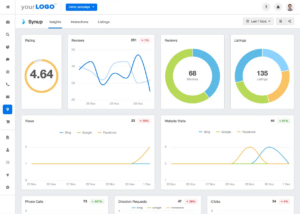
Key Features:
- 60+ publisher partners for listing businesses
- Social media platform management
- Review management of the local business
- Marketing campaign management for business profiles
- Performance optimization for your clients with reselling
- Web-Pages optimization
- White Label Services
2. SEranking
SERanking is a cost-effective SEO platform with numerous features, including website rank tracking and competitor analysis. It offers white-label options that allow customization according to the client’s branding by inserting the logo and color scheme.
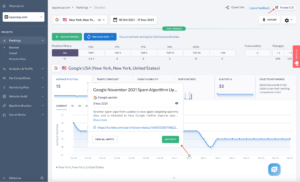
Key Features:
- Website Rank Tracker
- On-page SEO Checker
- Website Audit
- Competitor analysis tool
- Backlink checker
- Local Marketing Tool
- Keyword research
- Content Marketing tools
- Whitelabel Tools
3. Semrush
Semrush is a comprehensive SEO tool with over 10 million users. The platform’s Agency Growth Kit includes white-label capabilities, enabling agencies to create customized reports with their branding, and you can tailor them to include various SEO metrics and insights.
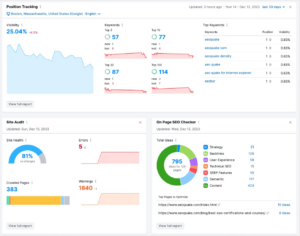
Key Features
- Keyword Research
- On-Page SEO
- Local SEO
- Rank tracking
- Link Building
- Whitelabel tools
- Competitor SEO analysis
4. WooRank
WooRank offers intuitive website analysis, providing detailed audits on on-page SEO, backlinks, and site performance. Its white-label feature, included in the Premium plan, allows for fully customizing reports with your branding. You also get personalized logos and design elements, making it ideal for agencies looking to deliver professional SEO reports to clients.
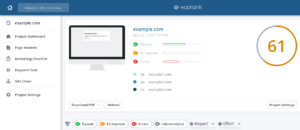
Key Features
- Marketing Overview
- Website Reviews
- Keyword Tracking
- Keyword Tracking
- White Label tools
- Site crawling
5. WebCEO
WebCEO offers white-label options to freelancers, agencies, and resellers. This allows users to use custom logos and color schemes on branded reports on their domain.
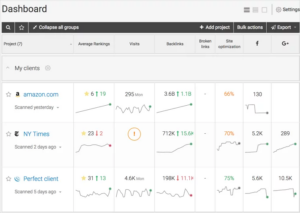
Key Features
- Rank tracking
- Keyword Research
- Site Audit
- SEO content assistant
- Whitelabel tools and services
- Backlink checker
- Traffic analysis
Conclusion
Local SEO is a powerful yet overlooked strategy many marketing agencies overlook when working with local and offline businesses. It can be an invaluable tool in boosting domestic visibility and attracting local customers.
With this article, you’ve got five local SEO strategies to help your clients step up in the local market. Help your customers conquer the local market by immediately implementing these steps.
